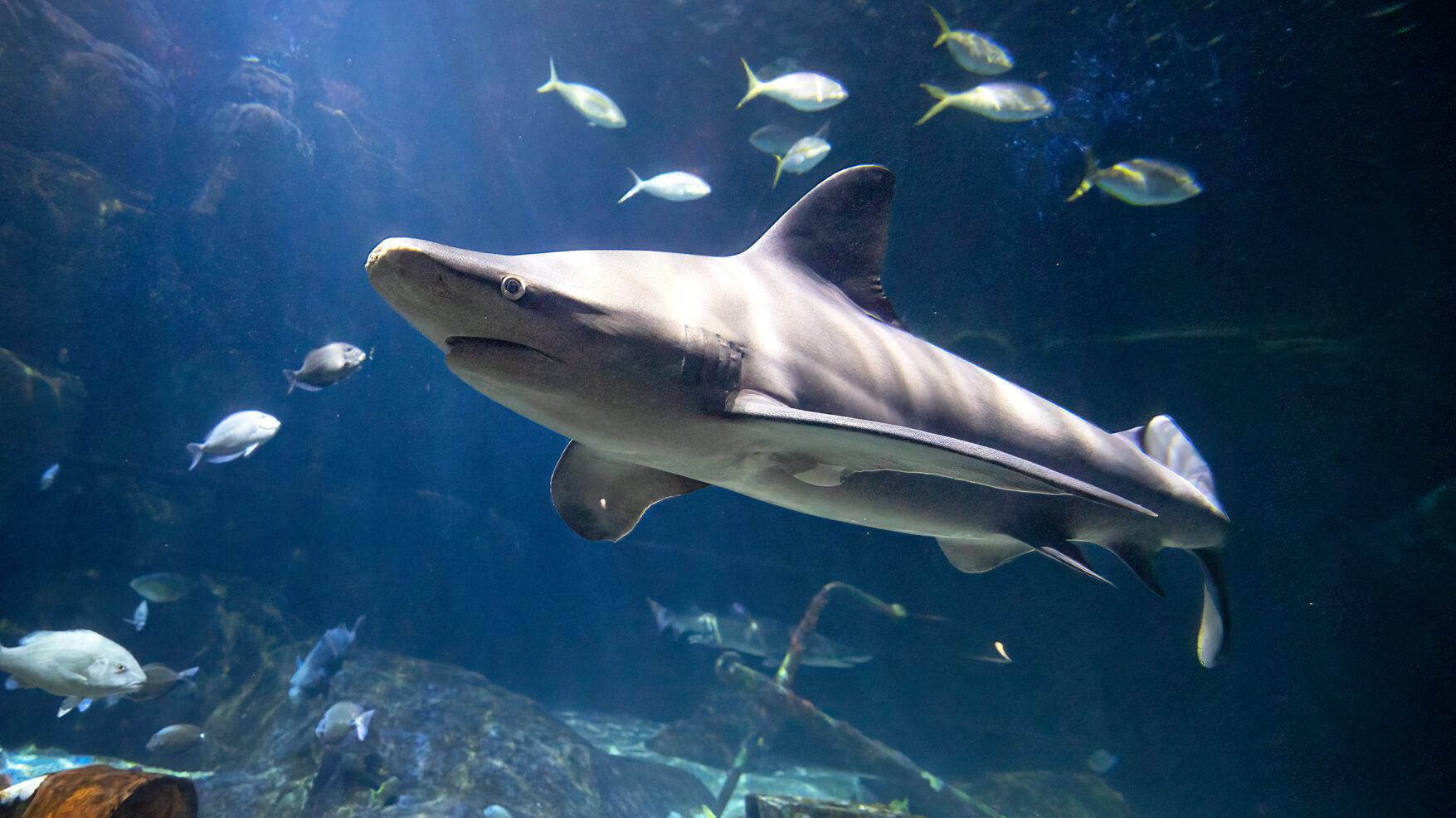Species Name: Carcharhinus plumbeus
Sandbar sharks are one of the largest coastal shark species, and the most common along the eastern US. They are closely related to bull sharks, though they are rarely aggressive towards humans.

Species Name: Carcharhinus plumbeus
Sandbar sharks are one of the largest coastal shark species, and the most common along the eastern US. They are closely related to bull sharks, though they are rarely aggressive towards humans.
Estimated 30 years.
Bottom-dwelling fish, smaller sharks, cephalopods, shrimp, and crabs.
Shallow coastal waters in temperate and tropical regions.
Worldwide, including the East Coast from Cape Cod to Florida, the Gulf of Mexico, and the Caribbean.
Length: Up to 8 feet
Weight: Up to 200 pounds
Sandbar sharks possess brown or gray skin with white on their stomachs. They are distinguished by a tall dorsal fin on their back, as well as short, round snouts and triangular teeth. They also possess large, broad pectoral fins.
Diet
These sharks will prey upon bottom-dwelling fish such as eels, skates and rays, as well as smaller sharks, cephalopods like octopus and squid, shrimp, and crabs.
Habitat
This species resides near the ocean floor in shallow areas along the coast, such as harbors and bays. They are the most common shark species found along the East Coast of the US, and the most common in the Chesapeake Bay, which is a major nursery area for sandbar sharks.
Reproductive Behavior
Sandbar sharks become sexually mature around their mid teens, and females will give birth between June and August every two or three years to live pups in shallow coastal areas. The pups, which are around 2 feet long when they're born, will stay in their nursery areas until late fall before moving south to warmer waters in schools.
Relationship With Humans
The sandbar shark is rarely involved in altercations with humans, as it only hunts smaller prey away from beaches and closer to the ocean floor, rather than the surface.
Concerns
Populations are considered overfished, having dropped possibly by two-thirds in the southwestern Atlantic from the 1970s into the 1990s. Sandbar sharks don't reproduce or grow as quickly as other species, increasing the vulnerability of their populations.
Celebrations
Within the US, recreational fishing of sandbar sharks is prohibited, and any recreational angler that hooks a sandbar shark must release it immediately without taking it out of the water. The National Oceanic and Atmospheric Administration (NOAA) manages the species under the Consolidated Highly Migratory Species Fishery Management Plan, and fishery regulations have resulted in a slight increase in sandbar shark populations. Only a few commercial vessels are selected each year to harvest sandbar sharks for research under NOAA's supervision.

Norfolk Canyon Sharks
Our sandbar sharks reside in our Norfolk Canyon Aquarium, along with our other large shark species: the sand tiger shark, and our nurse shark.

Endangered (EN)
A taxon is Endangered (EN) when the best available evidence indicates that it meets any of the criteria A to E for Endangered, and it is therefore considered to be facing a very high risk of extinction in the wild.
IUCN Red ListWant a more up-close and personal experience with our sharks? Book a Behind-the-Scenes Tour with us!